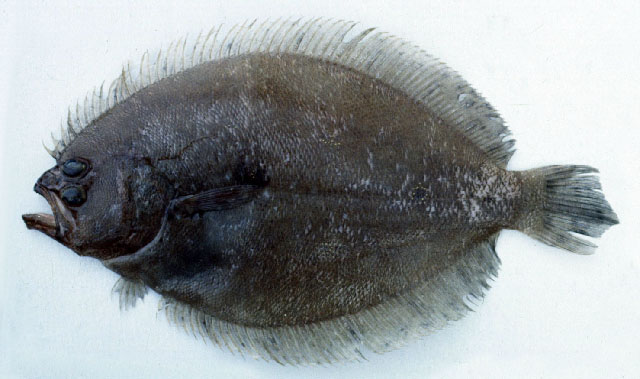| Paralichthyidae (Large-tooth flounders) |
| 35 cm SL (male/unsexed) |
|
demersal; marine; depth range 20 - 27 m |
| Indo-West Pacific: Persian Gulf east to India; throughout the Malay Peninsula to the Philippines and Indonesia. |
|
Dorsal spines (total): 0-0; Dorsal soft rays (total): 72-74; Anal spines: 0-0; Anal soft rays: 58-59. Body brownish, a small dark blotch at junction of straight and curved parts of lateral line. Body deep ovoid, its depth 1.8 to 2 times in SL. Head length 3.1 to 3.3 times in SL. Upper-eye diameter 5.3 to 5.9 times in head length. Maxilla extending to below posterior margin of lower eye. Upper-jaw length 2.3 to 2.4 times in head length. Teeth in upper jaw small and close-set laterally, and enlarged anteriorly. Teeth in lower jaw stronger and more widely spaced than those of upper jaw. Pectoral fin on ocular side with 12-13 soft rays (Ref 9774). |
| Found on the muddy and sandy trawling grounds of the continental shelf. Feeds on benthic organisms. Sold mostly fresh in markets. |
|
Least Concern (LC); Date assessed: 10 March 2021 Ref. (130435)
|
| harmless |
Source and more info: www.fishbase.org. For personal, classroom, and other internal use only. Not for publication.
